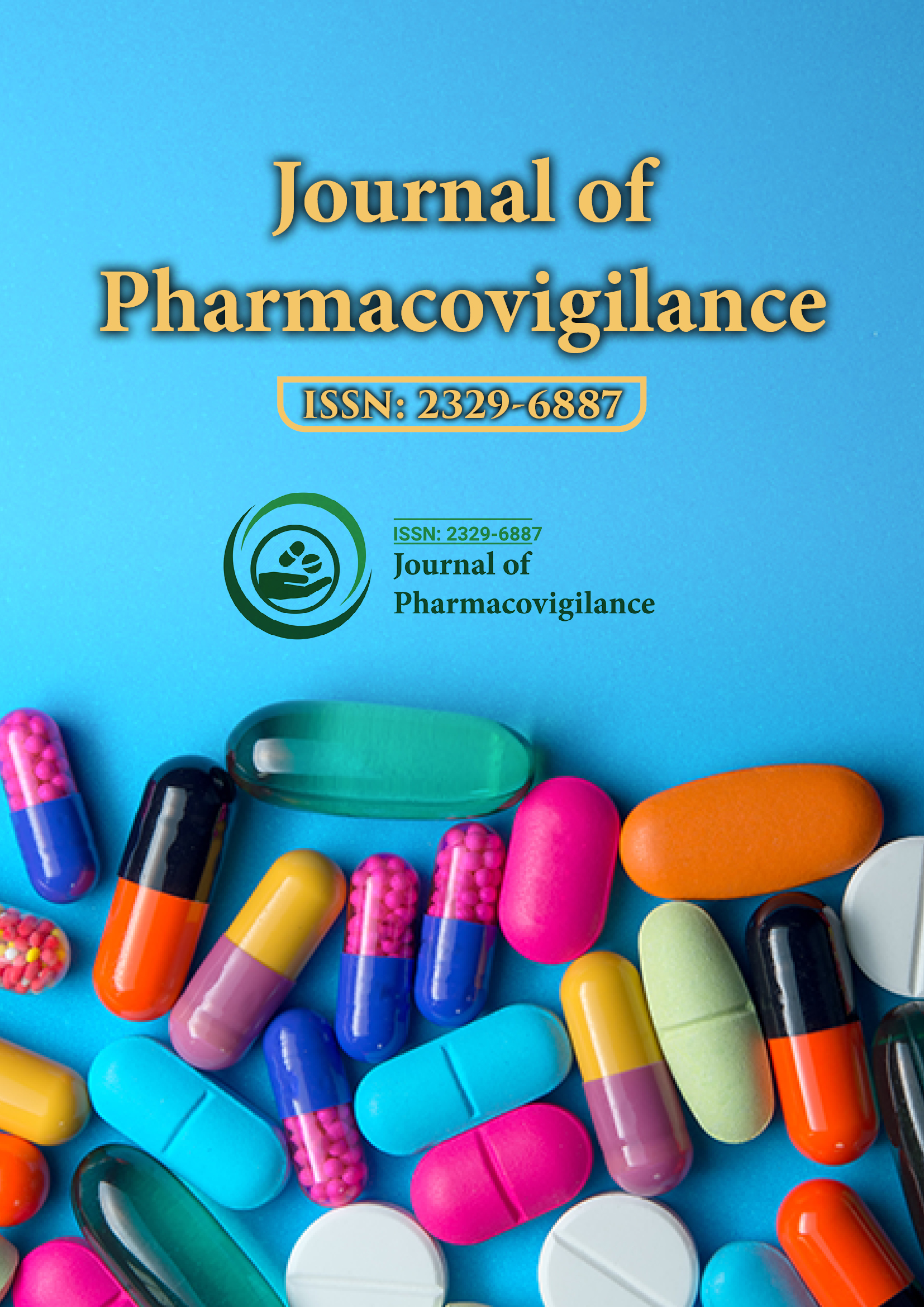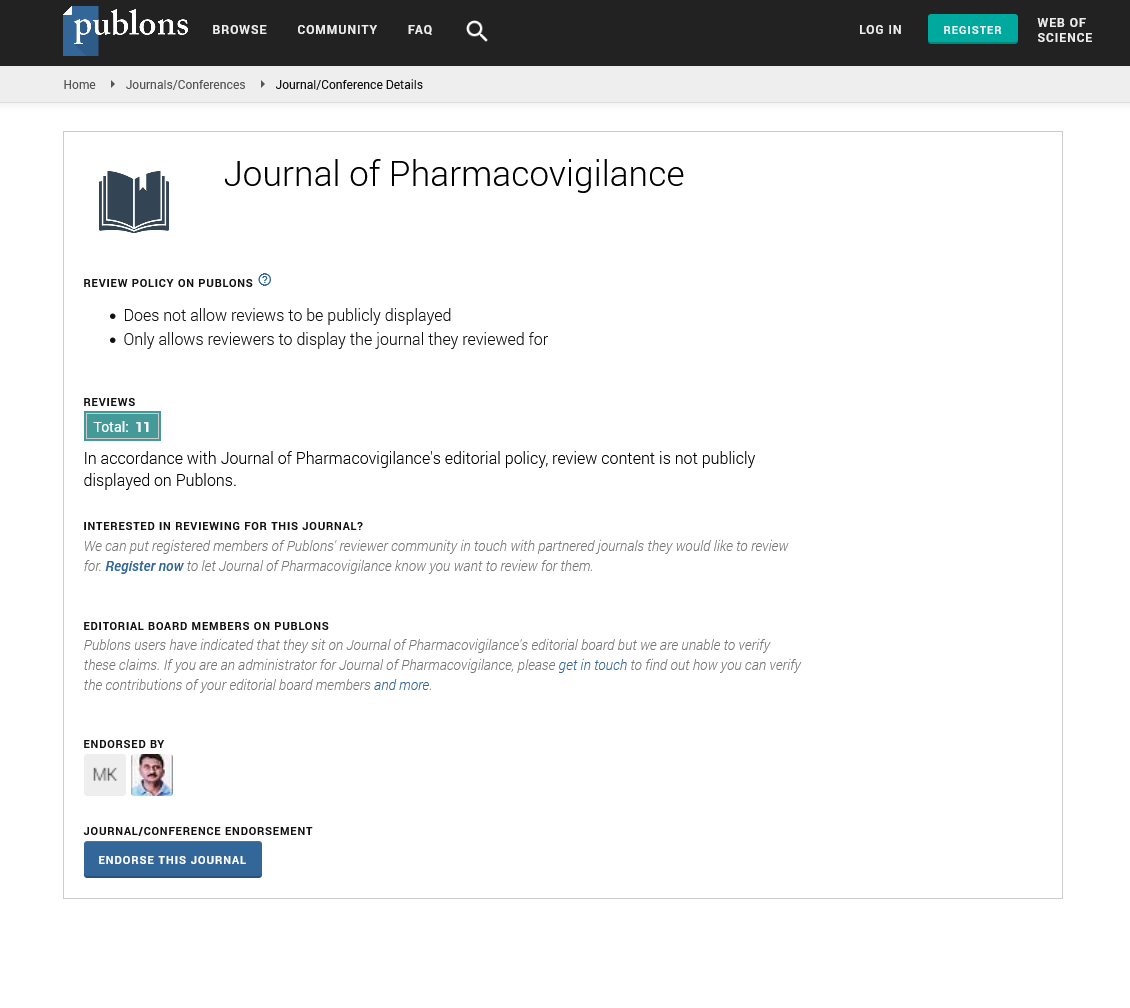Indexed In
- Open J Gate
- JournalTOCs
- The Global Impact Factor (GIF)
- RefSeek
- Hamdard University
- EBSCO A-Z
- OCLC- WorldCat
- Publons
- Euro Pub
- Google Scholar
Useful Links
Share This Page
Journal Flyer

Open Access Journals
- Agri and Aquaculture
- Biochemistry
- Bioinformatics & Systems Biology
- Business & Management
- Chemistry
- Clinical Sciences
- Engineering
- Food & Nutrition
- General Science
- Genetics & Molecular Biology
- Immunology & Microbiology
- Medical Sciences
- Neuroscience & Psychology
- Nursing & Health Care
- Pharmaceutical Sciences
Perspective - (2025) Volume 13, Issue 1
Real-World Evidence in Post-Marketing Drug Surveillance
Naveen Beltran*Received: 03-Mar-2025, Manuscript No. JP-25-28640; Editor assigned: 05-Mar-2025, Pre QC No. JP-25-28640 (PQ); Reviewed: 19-Mar-2025, QC No. JP-25-28640; Revised: 26-Mar-2025, Manuscript No. JP-25-28640 (R); Published: 02-Apr-2025, DOI: 10.35248/2329-6887.25.13.508
Description
Post-marketing drug surveillance, or Phase IV of clinical development, plays a pivotal role in understanding the long-term safety, effectiveness, and risk profile of pharmaceutical products in a real-world setting. While Randomized Controlled Trials (RCTs) provide rigorous evidence of efficacy and safety under controlled conditions, they are inherently limited by sample size, duration, and participant selection. Real-World Evidence (RWE) has emerged as a transformative approach to supplement these limitations by capturing data from routine clinical practice, offering a more comprehensive view of how drugs perform across diverse populations, healthcare settings, and comorbidities. The integration of RWE into pharmacovigilance activities enhances the ability to detect rare or delayed Adverse Drug Reactions (ADRs), monitor drug interactions, and inform regulatory decisions with greater precision.
RWE is derived from Real-World Data (RWD), which includes information from electronic health records, insurance claims, patient registries, mobile health apps, and even social media platforms. These data sources provide an enormous volume of information generated outside traditional clinical trials. By harnessing this wealth of data, post-marketing surveillance can shift from a passive, reactive model to a more proactive, data-driven system. This shift is particularly important for the early identification of drug safety signals, which can mitigate risks to public health and reduce the likelihood of product withdrawals.
One of the key advantages of RWE in post-marketing surveillance is its applicability to broader patient populations. Clinical trials often exclude elderly individuals, children, pregnant women, and patients with multiple comorbidities. In contrast, RWE encompasses these subgroups, offering insights into differential drug responses and vulnerabilities. This inclusivity enhances pharmacovigilance by revealing adverse events or efficacy trends that may not have been apparent during pre-approval studies. Moreover, RWE enables the longitudinal monitoring of patients, supporting the detection of cumulative toxicities, changes in adherence, and real-world treatment outcomes over time.
Analytical methodologies used in RWE studies are increasingly sophisticated. Advanced statistical modeling, causal inference frameworks, and machine learning techniques are employed to control for confounding variables and establish associations between drugs and observed outcomes. Propensity score matching, instrumental variable analysis, and regression discontinuity designs are common tools to approximate the causal rigor of RCTs. Additionally, signal detection algorithms powered by real-time analytics can scan RWD for unexpected patterns of adverse events, flagging potential safety concerns faster than traditional spontaneous reporting systems.
There have been several successful applications of RWE in post-marketing drug safety. For example, large-scale observational studies using insurance claims data have been instrumental in identifying increased cardiovascular risks associated with certain anti-inflammatory medications. Similarly, the FDA’s Sentinel Initiative has leveraged RWD from millions of patients to proactively monitor safety signals for vaccines and newly approved drugs. These examples underscore the growing regulatory acceptance of RWE as a complementary tool to traditional pharmacovigilance.
Despite its promise, RWE faces notable challenges. Data heterogeneity, inconsistency in documentation, and missing variables can compromise study validity. Ensuring data privacy, standardizing coding practices, and maintaining data integrity are ongoing concerns. Furthermore, biases inherent to observational data, such as channeling bias and immortal time bias, require careful methodological attention to avoid misleading conclusions. The transparency of data sources and study protocols is also crucial to building confidence in RWE-based findings among healthcare professionals, regulators, and the public.
To address these issues, regulatory bodies are actively developing frameworks and guidelines for the appropriate use of RWE in pharmacovigilance. The U.S. FDA, European Medicines Agency (EMA), and other international agencies have released position papers outlining quality standards for RWE studies, including principles of transparency, reproducibility, and robustness. J Pharmacovigil, Vol.13 Iss.1 No:1000508 2 Industry stakeholders are also investing in dedicated real-world data platforms and partnerships with academic institutions to enhance their post-marketing surveillance capabilities.
Citation: Beltran N (2025). Real-World Evidence in Post-Marketing Drug Surveillance. J Pharmacovigil. 13:508.
Copyright: © 2025 Beltran N. This is an open access article distributed under the terms of the Creative Commons Attribution License, which permits unrestricted use, distribution, and reproduction in any medium, provided the original author and source are credited.

